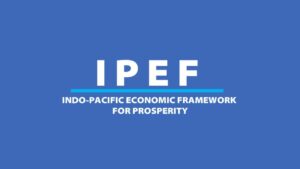The Production Linked Incentive Scheme was introduced to put the domestic manufacturing segment on the right track, to generate jobs, and to assist decrease India’s import reliance in crucial sectors. Nevertheless, two years after the introduction of this scheme, the manufacturing segment is grappling, and import reliance has augmented in many sectors. The anticipation from the Finance Minister was that the PLI scheme would be reorganized, and superior focus laid on tackling its flaws. Shockingly, budgetary distributions on the PLI schemes in virtually every sector have been lessened, some being subjected to substantial cuts. India has never had a finer window of opportunity and it is not a window that will remain open eternally.
Improbabilities about getting on top of sustained development pathway impend substantial. A mega setback is to guarantee inclusivity, particularly during a stage when unemployment has become ubiquitous.
If the forecasts of the National Statistical Office are any signal, the present fiscal year could see a development of precisely 7%, while the Reserve Bank of India’s anticipated growth rate was a bit lower. Nonetheless, in its World Economic Outlook Update released recently, the International Monetary Fund (IMF) has revealed that in the calendar year 2023, India would grow only at 6.1%.
Over the preceding 30 years, consecutive Central governments have attempted powerfully to increase the portion of manufacturing in India’s Gross Domestic Product (GDP) to 25%. It presently stands at 17%, which is a minimal growth since 2014, when it had been vegetating at 13% to 15%. China has been competent to raise the portion of its manufacturing sector in its GDP from 17% in 1992 to 28% in 2021. Subsequently, China has developed as the world’s largest manufacturing economy. Its share in global manufacturing has amplified from a mere 4% in 1992 to an overpowering 30% in 2021, considerably larger than Germany which for a long was the largest manufacturing economy.
If India wants to attain its wished target of manufacturing contributing about 25% of its GDP, policy consideration should concentrate on increasing the share of Indian manufacturing in prudently chosen sectors in global markets. This is the chase of the ‘industrial policy’ supported by numerous famous economists like Dani Rodrik and Alice Amsden. This tactic for the first time since independence has been attempted in India through the execution of the Production Linked Incentive (PLI) scheme.
PLI sees the light of day. But…..
Two years ago, the government seemed to have had the solution to the disorder of unemployed intensification when it introduced the Atma Nirbhar Bharat Abhiyan with much hullabaloo. This program was envisioned to aid three main purposes such as to put the domestic manufacturing segment on the right track, to generate jobs, and to assist decrease India’s import reliance in crucial sectors.
For this intent, the PLI scheme was introduced by cautiously choosing a set of industries that would meet all these purposes. Thirteen major sectors, comprising textiles, automobiles and components, pharmaceuticals and their active ingredients, large-scale electronics manufacturing, and telecom and networking products, were picked. Nevertheless, two years after the introduction of this scheme, the manufacturing segment is grappling, and India’s import reliance has augmented in many of the chief sectors. Because of this, the Current Account Deficit (CAD) at the end of the second quarter of the current financial year increased to 4.4% of GDP.
The anticipation from the Finance Minister was that the PLI scheme would be reorganized, and superior focus laid on tackling its flaws. Shockingly, budgetary distributions on the PLI schemes in virtually every sector have been lessened in the 2023-2024 Budget, some being subjected to substantial cuts. This comprises some of the significant industries such as large-scale electronics manufacturing, telecom and networking products, active pharmaceutical ingredients (APIs), etc.
While presenting the Budget for the fiscal year 2023-2024, the Finance Minister allocated an amount of ₹22,138 crores to India’s micro-small-and medium enterprise (MSME) sector and additional measures like credit line assurances and a program with ₹6,000 crore disbursement to quicken MSME performance. However, it was symptomatic of India’s fragmentary approach to a sector that is both significant for employment creation and GDP growth. What is being ignored is a systemic view of India’s MSME sector and within it, more importantly, the Small and Medium Enterprise (SME) sector. A complete strategy design that considers SMEs as a part of a multifaceted networked Global Value Chain (GVC) system that pushes both national and company-level sourcing and competitive advantage is obligatory.
SMEs need a Booster Dose
The government’s PLI schemes are devised to bring SMEs into the wrinkle of large-scale industry. But then again, they do not do enough to foster SMEs with GVC connections. The PLI schemes have an anchor-led paradigm that incentivizes import replacement. It includes global and domestic Original Equipment Manufacturers (OEMs) plugging Indian SMEs into the value chain with better knowledge and proficiency level collaboration. The tactic is toward a unified strategy sketch that emboldens OEMs to source finished products for an Indian manufacturing ecology. The PLI scheme design should rationally push global OEMs towards ‘Made in India’ sourcing within GVCs that encourages SMEs to maintain export-led, competitive scale, high-capacity consumption-driven functions.
For this PLI policy to thrive, via both investment for the international and Indian market and export-driven sourcing, India’s China plus one strategy must target not just borderline know-how but fundamental engineering manufacturers that fit tidily into composite industries with multiple value chains, say for example, automobiles and defence manufacture. Admission into India for universal-sized product integrators must then mean admission in conjunction with OEMs in a way that essentially encompasses Indian SMEs.
Similarly, if not more crucial, the SME is the locomotive for export. As it is, India’s manufacturing exports are lower than 10% of GDP, and erecting engineering competencies inevitably involves nudging Indian SMEs into GVCs to both acquire knowledge and scale. The main obstacle there, at least until international OEMs arrive in India with an export-driven viewpoint will be the sub-ideal plant dimensions at which the SMEs function. At these points, Indian SMEs look costly, and cost factors for universal OEMs look unappealing.
What is then needed is a government-driven motivation to aim both multinational OEMs and product integrators into incentivized plans precisely aimed towards associating with Indian SMEs, erecting competencies and operational level. Encouraging joint ventures and strategic partnerships between multinationals and SMEs then becomes a crucial part of the toolkit that the government needs to employ.
Strategy blueprint for the government then certainly has to take in global GVC design, with export scale enticements and marketing assistance that make SMEs not just target global export chances but make them cost competitive and competent internationally. This, in turn, will push an export orientation in Indian SMEs to invest in plant capacity enlargement and unchain economies of scale at international levels to improve cost levels and build quality. Strategy also needs a comprehension of how expertise and abilities are captivated within both the general economy and at the SME level. Worldwide GVCs are not about a nation’s large quantity of labour or its competence as explained in conventional textbooks. They are also knowledge networks with tacit knowledge that overcomes the technological and cultural variances across nations.
Foreign Direct Investment (FDI) is beneficial not just for the capital it brings in but also for the acquaintance inserted in the GVC. It has a long-run influence on economic development through the vertical and horizontal connections that not only increase output and technical skill but also construct knowledge stock. This is something that China understood well when it constructed manufacturing groups accenting targeted technology and industrial sectors.
India has never had a finer window of opportunity than at present. Friend shoring is in vogue. For once, the long-term cost of production and knowledge safety is being evaluated in addition to political jeopardy across GVCs, whether from the USA or Europe or Japan, or South Korea. It is not a window that will remain open eternally. If the Indian strategy shape does not use this window to fabricate its SME sector it is yet another opportunity lost.




















